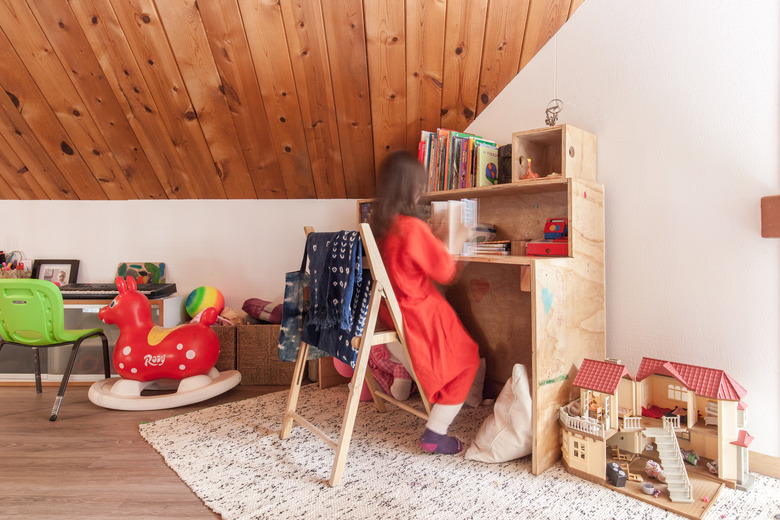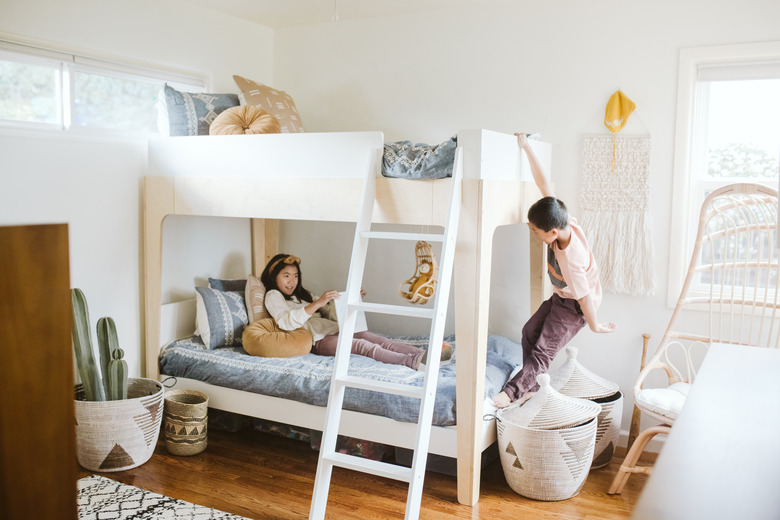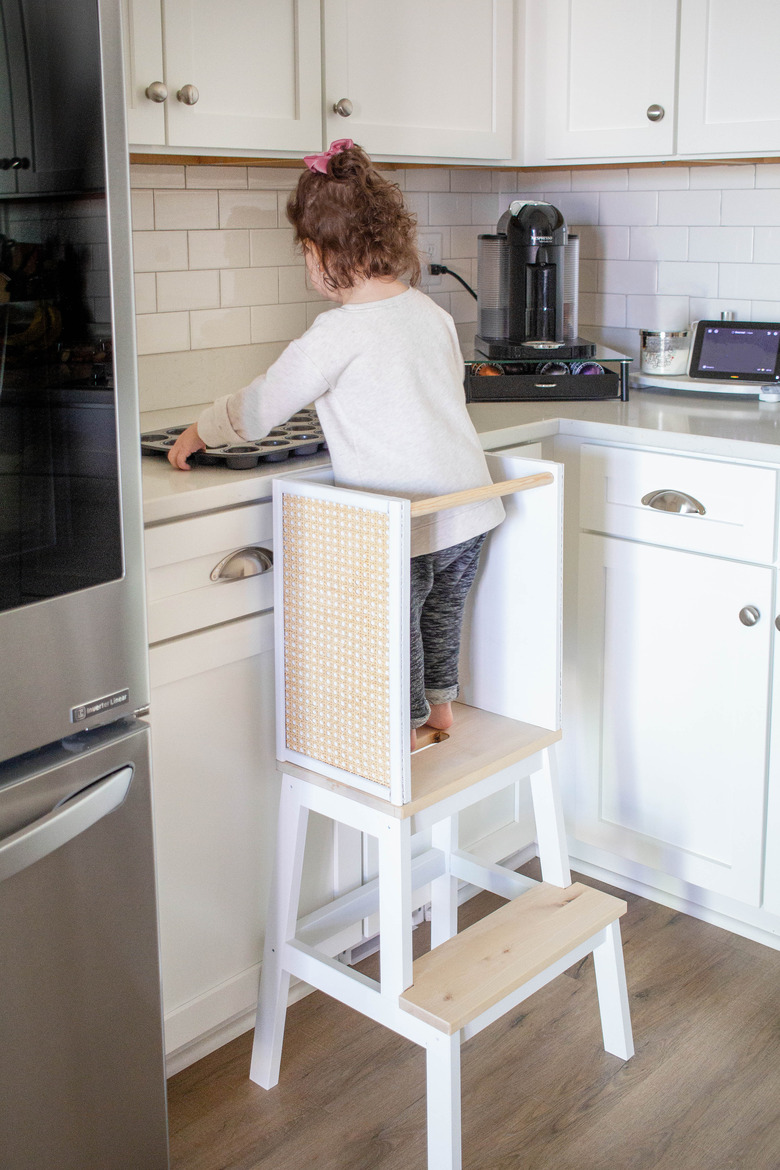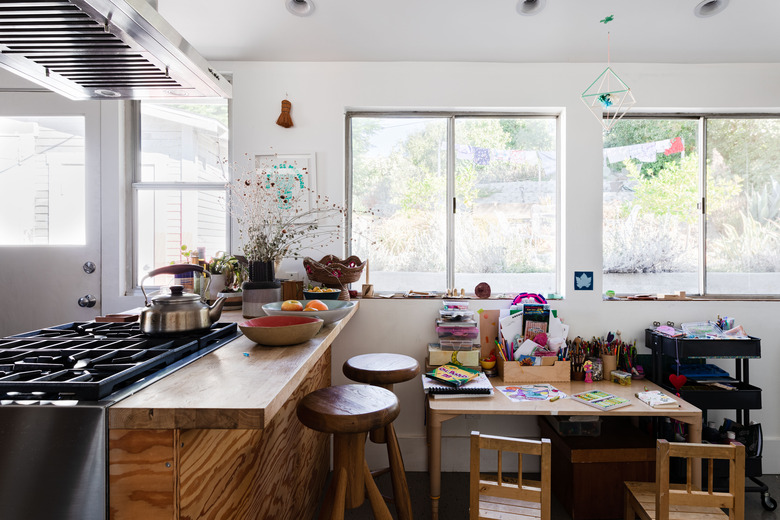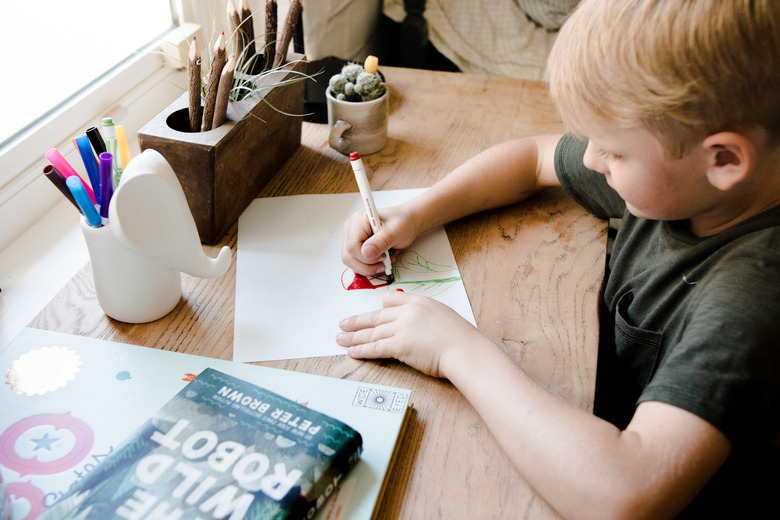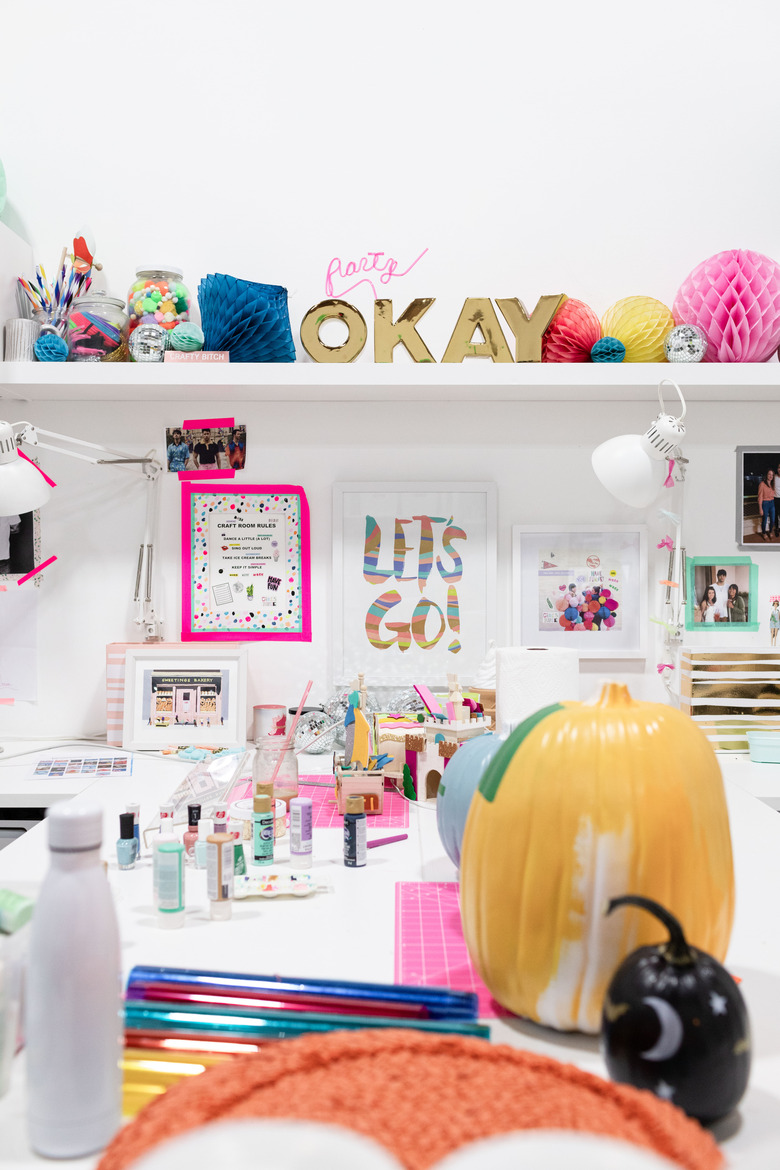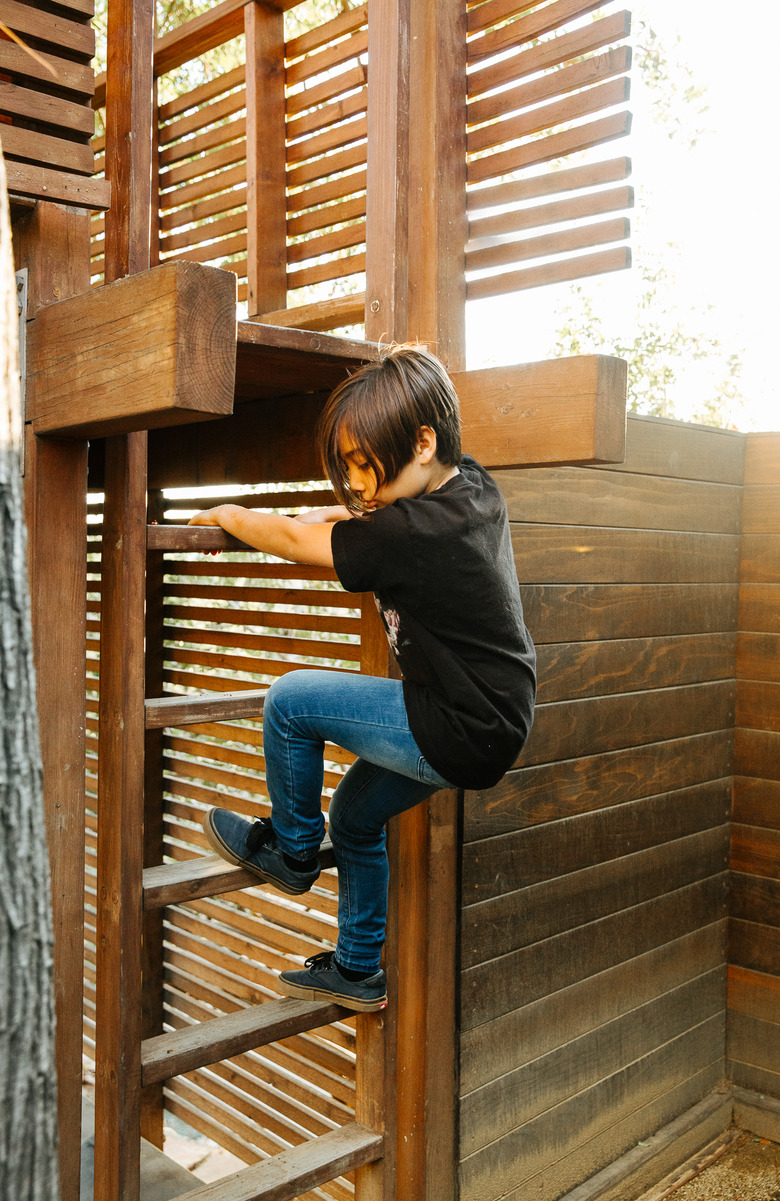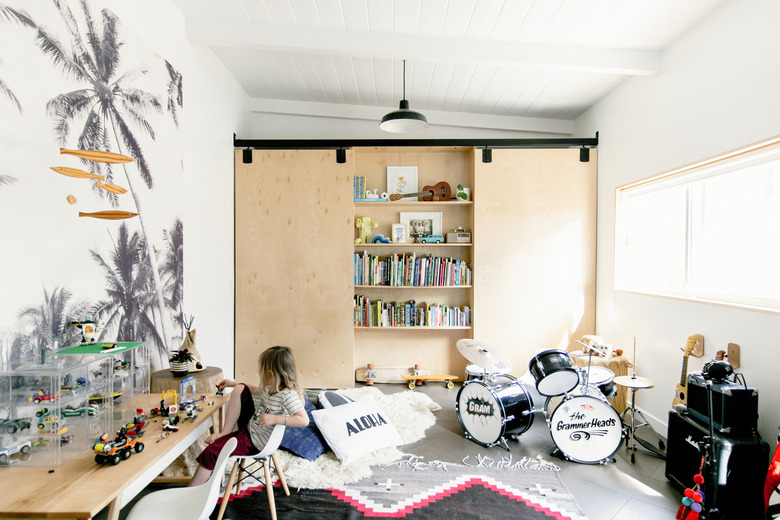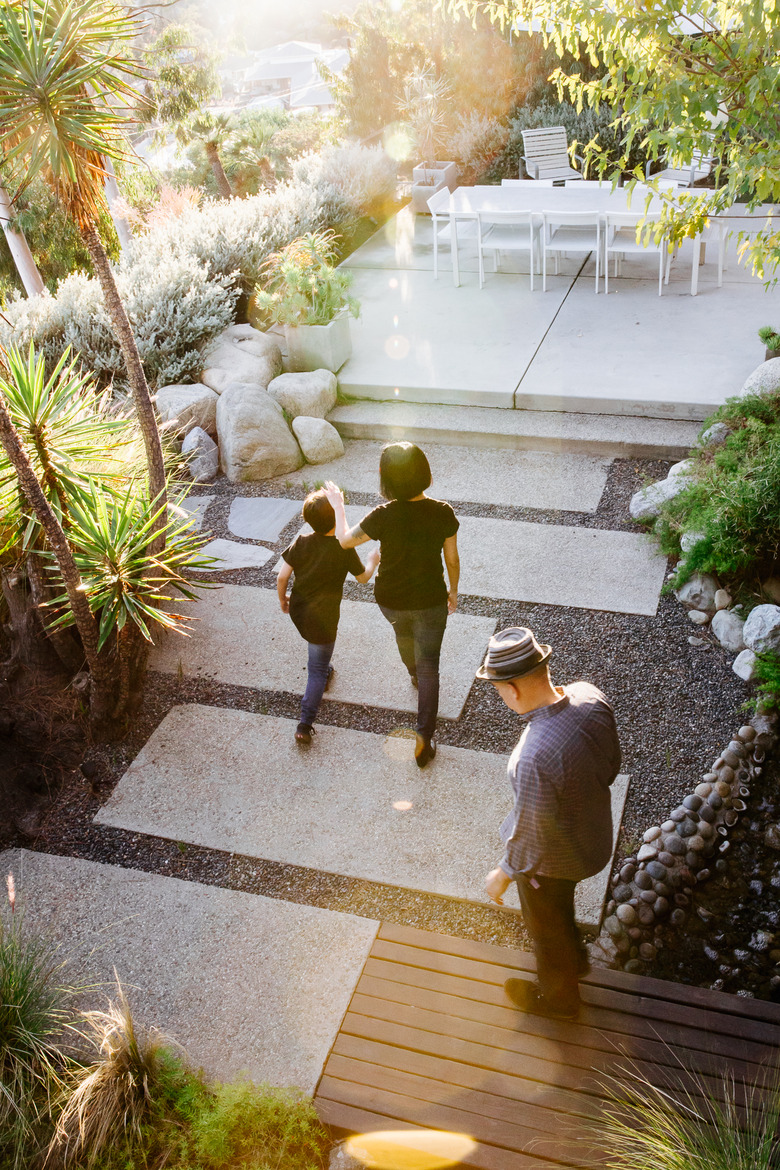Teachers Share Tips On How To Create A "Classroom" At Home
Having the kids home from school is taking on new meaning these days. As parents and caregivers, we are all invested in educating our children and providing safe and fun learning environments for them. Now that more of our homes are doubling as our kids' classrooms, we are tasked with also being teachers (and principals) during the week to keep them challenged, entertained, and engaged. From setting up lesson plans and activity schedules to clearing dining tables to use as makeshift desks and finally putting that chalkboard paint to use on a free wall or door, we're all doing our best to adapt quickly. To help, we reached out to teachers to share their tips for designing environments at home that are as conducive to learning and discovery as the classrooms they have lovingly created.
Tip #1: You don't have to recreate a traditional classroom.
Tip #1: You don't have to recreate a traditional classroom.
"In fact, the exact opposite!" encourages Lucinda Langsdale, an accredited teacher in Los Angeles who has taught kids in one-on-one sessions for many years and now has her third grade daughter at home as an additional student. "One of the joys of homeschool learning is being able to involve your child in creating a learning environment where they will feel inspired. Don't be afraid to use beanbags, yoga balls, or just cushions to sit on if your learner is feeling restless and struggling to focus."
See more of this home: The Javiers' La Mesa Home
Tip #2: Ask your students what inspires them and incorporate it into their school days and classrooms.
Tip #2: Ask your students what inspires them and incorporate it into their school days and classrooms.
As Langsdale noted, "Involve your child." Ah, when the student becomes the teacher ... It's good to go to the source to find out what works well for them. Imagine if our bosses asked us the same — what a difference that would make in our lives! If your kids have problems sitting still for long periods of time, prefer having their desks facing a window instead of a wall, or like reading outdoors versus indoors, these are things you can try to address. For instance, if you have children who like cooking or baking, let your kitchen be one of their classrooms. Having these little pieces of knowledge can greatly improve homeschooling for all involved. It's as simple as asking, "What do you want to learn this week?"
Make this step stool: Learning Tower Tutorial
Tip #3: Establish predictability.
Tip #3: Establish predictability.
"Establishing predictability provides a sense of security and stability for children," says Christina, an elementary school teacher and mother of a sixth grader and high school junior. "Parents should set up a work area and make a daily schedule that includes time for children to exercise and to be creative."
We all know how important schedules are — getting kids to stick to them is another story — but let's take predictability a step further too, by extending it to their physical learning environment(s), which the next tips address. At school, they knew where their backpacks had to be placed, supplies or books were kept, and their workbooks had to be stored. If it's possible to bring this consistency to their study areas, this helps keep them and your home organized.
See who lives at this house: LA Metro's Letitia Fernandez Ivins
Tip #4: Choose a study area with natural light.
Tip #4: Choose a study area with natural light.
Consider windows your students' best friends for home learning for what they provide: natural light. It energizes us. "We don't all have the luxury of a lot of space," notes Langsdale, "but try and find a quiet spot in your home where there are few distractions and lots of natural light. This will help to fuel the learning and creativity. "
Tour this family home: Meghan Phillips's Light-Filled California Adobe
Tip #5: Make educational material and art supplies accessible to your "students."
Tip #5: Make educational material and art supplies accessible to your "students."
At Joy Cho's Oh Joy! studio, her staff is at the ready dreaming up creative projects thanks to having whimsical items about. Notice how colorful supplies and decor plus positive messages create an uplifting work environment. No matter what age, if you place books or art supplies in front of people, that's the first step in encouraging engagement and creativity. Pull what you have in your home that fits their grade level reading wise and items that can be used for independent projects: building blocks, cardboard boxes, tissue paper, ribbon or yarn, and old magazines. Then just challenge them to "make something." It could be inspired by something they read or just by the art supplies. You'll be amazed what they come up with.
Learn from a pro: How Joy Cho Designed Her Studio
Tip #6: Include outdoor classes.
Tip #6: Include outdoor classes.
If you have a backyard or patio space to explore, take your lessons outdoors. Start a garden or tend to an existing one with your students, have them observe and record insects and animals they see, have them write stories or draw in journals, or allow them to finish worksheets on your balcony. Langsdale concurs: "If the weather is nice, don't be afraid to take the learning outside. It's an experience our children rarely get at a traditional school and sometimes a change of scenery and fresh air can really up productivity."
Explore this backyard: Pasadena Midcentury Post-and-Beam Home
Tip #7: Add music and meditation time to your daily schedule.
Tip #7: Add music and meditation time to your daily schedule.
Music class is often kids' favorite class, so add that to your daily schedule and even introduce music into other study times. "If you live in a noisy environment, think about counteracting it by playing classical music, which has been proven to stimulate brain activity for students," suggests Langsdale. Or perhaps some mellow R&B or Billie Eilish are more effective in your household. Try choosing music together.
Christina, who has taught in public schools for two decades, also suggests "guided meditation/relaxation activities, as it helps relieve stress and anxiety." We're hearing more and more how teachers are setting aside time during the school day to do just that with their students — and they're benefiting from it. My own daughter loves how her teacher ends the school day with 20 minutes of meditation time: listening to soft music or a meditation recording that helps them to relax their minds before leaving class.
See more of this playroom: San Diego Surf Shack
Tip #8: Be flexible with your home and with each other.
Tip #8: Be flexible with your home and with each other.
It may take a couple weeks before you find that magical classroom setup (or setups) for your family. Just as teachers often move kids around in their classrooms to find that seating chart that works, you may likely have to do the same with your furniture and kids' schedules. Of course, setting up a desk will be the easiest task. Many of our kids are going from being with hundreds of kids a day to just us. As their prime playmates and teachers, at least in person, how we handle this new aspect of our relationship with our kids will be more challenging but also rewarding.
"We all agree that getting back to basics is what is most important for our family," share Jonathan Maxwell-Jolly, an early preschool teacher, and Aimee Anspach, a state government employee, as they ease into having their 6-year-old kindergartener and 18-year-old college student at home full-time. "Social interaction and learning to deal with others are most important for children our youngest son's age — but then we realized that's what is most important for college-age students as well."
They're only just a week into transitioning their kids into homeschooling, but for this family of four in Sacramento, they're focused on creating positive social experiences together, virtually with others, and adapting each day. "We are loving one another, making meals together, playing board games, FaceTiming with grandparents, cleaning house, tackling all the projects we've put off, and enjoying our time together," says Anspach. "Social interaction is what we all thrive for — and learning from them."
We're all in this together.
Discover more tips to make your household a haven by checking out "Easy Ways to Create Spaces at Home for Play, Meditation, and Relaxation for Your Family."
